
- The Architectural Significance of the Sagrada Familia
- Exploring the History Behind the Sagrada Familia
- The Unique Design Elements of Gaudí's Sagrada Familia
- Symbolism in the Sagrada Familia: Colors and Forms
- Visiting the Sagrada Familia: What You Need to Know
- The Future of the Sagrada Familia: Ongoing Construction and Vision
The Sagrada Familia, designed by the visionary architect Antoni Gaudí, stands as an iconic symbol of Barcelona and a testament to the city's rich architectural heritage. This breathtaking basilica, still under construction after more than a century, captivates millions of visitors each year with its intricate facades and stunning interior.
In exploring The Sagrada Familia: A Marvel of Architecture and History, one can appreciate the fusion of natural forms and religious symbolism that defines Gaudí's work. The project not only reflects the artistic innovations of the early 20th century but also embodies the enduring spirit of human creativity and devotion.
The Architectural Significance of the Sagrada Familia
The architectural significance of the Sagrada Familia lies in its unique blend of Gothic and Art Nouveau styles, which creates a visually striking structure that stands apart from traditional religious buildings. Gaudí's innovative use of geometry and organic shapes allows the basilica to transcend conventional design, resulting in a creation that feels both ancient and futuristic. This synthesis of styles is evident in the intricate details of the facades and the soaring towers that define the skyline of Barcelona.
One of the most remarkable aspects of the Sagrada Familia is its structural engineering. Gaudí employed advanced techniques, such as hyperboloid structures and catenary arches, to ensure stability while allowing for aesthetic fluidity. This approach not only enhances the basilica's beauty but also demonstrates Gaudí's profound understanding of materials and their properties. Key features include:
- Innovative use of light through stained glass windows
- Natural ventilation systems integrated into the design
- Symbolic representations of Christian themes throughout the architecture
Moreover, the basilica's layout reflects Gaudí's visionary approach to space and spirituality. The interior evokes a forest-like atmosphere, with columns resembling trees that support the vaulted ceilings. This design choice encourages visitors to experience a sense of connection with nature and the divine, reinforcing the spiritual purpose of the structure. Each element of the Sagrada Familia is intentionally crafted to guide the observer's journey, making it a profound architectural statement.
In addition to its aesthetic and structural innovations, the Sagrada Familia serves as a living museum of architectural evolution. As construction progresses, new techniques and materials are continually integrated, showcasing the adaptability of Gaudí's vision. This ongoing project symbolizes the dynamic nature of architectural history and invites future generations to contribute to its legacy, ensuring that the Sagrada Familia remains a beacon of creativity and inspiration.
Exploring the History Behind the Sagrada Familia
The history of the Sagrada Familia is as intricate as its design. Construction began in 1882 under architect Francisco de Paula del Villar, but it was soon taken over by the brilliant Antoni Gaudí in 1883. His vision transformed the basilica into a unique expression of his religious fervor and architectural innovation, marking the beginning of a project that would last over a century.
Throughout its history, the Sagrada Familia has faced numerous challenges, including the Spanish Civil War, which halted construction and led to the destruction of several of Gaudí's original plans. Despite these setbacks, the project has continued, with modern architects and artisans striving to remain faithful to Gaudí's original vision. Today, the basilica is not just a building but a symbol of resilience and dedication to cultural heritage.
Key milestones in the construction of the Sagrada Familia include:
- Completion of the Nativity Facade in 1935
- Gaudí's tragic death in 1926, which left the project unfinished
- The introduction of advanced technology in the 21st century to aid construction
As it stands today, the Sagrada Familia is projected to be completed by 2026, coinciding with the centenary of Gaudí's death. This landmark not only represents the culmination of architectural efforts over generations but also serves as a testament to the enduring impact of Gaudí's legacy on the world of architecture and art.
The Unique Design Elements of Gaudí's Sagrada Familia
Gaudí's Sagrada Familia showcases an array of unique design elements that enhance both its aesthetic appeal and structural integrity. One of the most striking features is the use of hyperboloid structures, which provide a sense of lightness while ensuring stability. This innovative approach allows for the intricate layering of forms that characterize the basilica. Key design elements include:
- Catenary arches that distribute weight efficiently
- Organic shapes inspired by nature, creating a harmonious flow
- Spiral towers that symbolize the ascent to the divine
Another remarkable aspect of the Sagrada Familia is its meticulous attention to natural light. Gaudí strategically designed stained glass windows that filter sunlight, casting vibrant colors across the interior. This creates a dynamic atmosphere that changes with the time of day, enhancing the spiritual experience for visitors. The integration of light serves to:
- Highlight architectural details
- Enhance the mood of each space
- Symbolize divine presence through illumination
Gaudí's commitment to nature and spirituality is evident in the basilica's forest-like interior, where columns mimic trees branching out to support the vaulted ceilings. This unique design choice fosters a sense of tranquility and connection with the natural world, reinforcing the overall theme of transcendence. Visitors often describe the experience as walking through a sacred grove, where each element contributes to a greater narrative.
Lastly, the Sagrada Familia exemplifies a symbiotic relationship between architectural innovation and tradition. As construction continues, modern techniques are seamlessly integrated with Gaudí's original vision, reflecting the evolution of architectural practices. This ongoing collaboration ensures that the basilica remains not only a monument to the past but also a canvas for future generations of architects.
Symbolism in the Sagrada Familia: Colors and Forms
The Sagrada Familia is a masterpiece that embodies profound symbolism through its colors and forms. Each hue in the stained glass windows is meticulously chosen to reflect various aspects of Christian theology and nature. For instance, the vibrant reds and yellows represent the warmth of divine love, while the cooler blues and greens evoke feelings of peace and tranquility. This careful selection of colors enhances the spiritual ambiance of the basilica, inviting visitors to engage with the space on a deeper level.
The use of organic forms throughout the Sagrada Familia further amplifies its symbolic significance. Gaudí drew inspiration from nature, translating elements like flowers, trees, and waves into architectural features. Columns resembling tree trunks support the interior, creating a seamless transition between the natural and the divine. This design choice not only reflects Gaudí's reverence for the environment but also serves as a reminder of the interconnectedness of all life.
Moreover, the structural elements of the basilica carry their own symbolism. The spiral towers are designed to symbolize the ascent towards the heavens, guiding the viewer’s gaze upward and encouraging a sense of spiritual elevation. Each tower represents a different aspect of the Christian faith, contributing to the overall narrative of the building. This layering of meaning enriches the visitor's experience, inviting contemplation and reflection on the themes of faith and devotion.
In essence, the Sagrada Familia transcends mere architectural beauty through its integration of symbolic colors and forms. The interplay of light and color within the basilica fosters an atmosphere of reverence, while its organic shapes evoke a connection to the natural world. This harmonious blend captures Gaudí's vision of a structure that is not only a place of worship but also a celebration of life's intricate tapestry.
Visiting the Sagrada Familia: What You Need to Know
When planning a visit to the Sagrada Familia, it's essential to consider the timing of your trip. The basilica receives millions of visitors annually, making peak hours particularly crowded. To enhance your experience, consider visiting during early morning or late afternoon. Booking tickets online in advance is highly recommended to avoid long queues, and guided tours can provide deeper insights into Gaudí's vision and the intricate details of the architecture.
Accessibility is another key factor for visitors. The Sagrada Familia is designed to be welcoming for everyone, with ramps and elevators available for those with mobility challenges. Additionally, audio guides in multiple languages are offered, allowing visitors to explore the basilica's history and architectural significance at their own pace. Make sure to check the official website for any updates regarding accessibility features and special events.
While exploring the Sagrada Familia, be sure to take note of the surrounding park areas. The gardens near the basilica provide a peaceful atmosphere for reflection and offer excellent spots for photography. Many visitors enjoy picnicking or simply resting while taking in views of the stunning facades. This adds an extra layer of enjoyment to your visit, as you can appreciate the basilica from different angles and perspectives.
Finally, remember to respect the sacred nature of the site during your visit. The Sagrada Familia is not only an architectural landmark but also an active place of worship. Visitors are encouraged to maintain a quiet demeanor, especially in areas designated for prayer. Engaging with the spiritual essence of the basilica can deepen your appreciation for Gaudí's extraordinary creation, making your visit all the more meaningful.
The Future of the Sagrada Familia: Ongoing Construction and Vision
The future of the Sagrada Familia is as captivating as its past, with ongoing construction that reflects a blend of tradition and modernity. As the project moves toward completion, set for 2026, the vision remains steadfast: to honor Gaudí's original designs while incorporating advanced technology and sustainable practices. This dual approach not only preserves the integrity of the basilica but also ensures its relevance in contemporary architectural discourse.
The ongoing construction efforts focus on several key aspects:
- Completion of the central nave, which aims to enhance the spiritual atmosphere of the interior.
- Integration of modern materials that improve structural resilience while staying true to Gaudí's aesthetic.
- Enhancements in visitor experience, including improved accessibility and educational resources.
As new generations of architects and artisans contribute to the Sagrada Familia, they embrace Gaudí's ethos of innovation. The project symbolizes an ongoing dialogue between the past and the future, inviting future architects to imagine new possibilities while respecting historical context. This continuity of vision ensures that the Sagrada Familia will remain a living testament to creative expression for years to come.
Moreover, the anticipation of its completion invites discussions around the cultural significance of the basilica in today’s society. As it reaches its final stages, the Sagrada Familia will not only serve as a spiritual sanctuary but also as a vibrant cultural hub that fosters community engagement and artistic inspiration, reinforcing its role as a symbol of Barcelona's enduring spirit.
Para profundizar en este fascinante tema, te invitamos a ver el siguiente video que explora en detalle la Sagrada Familia, una maravilla de la arquitectura y la historia.

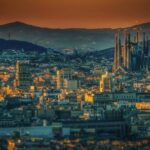 The Sagrada Familia: 🏰🇪🇸 Gaudí's Masterpiece in Barcelona
The Sagrada Familia: 🏰🇪🇸 Gaudí's Masterpiece in Barcelona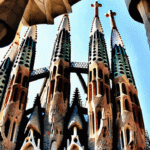 Sagrada Familia in Barcelona 🏰: Gaudí's UNESCO Basilica
Sagrada Familia in Barcelona 🏰: Gaudí's UNESCO Basilica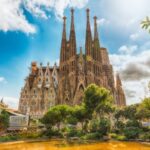 From the Majestic Sagrada Familia to the Exotic Barcelona Zoo: A Perfect Day of Adventure in Barcelona
From the Majestic Sagrada Familia to the Exotic Barcelona Zoo: A Perfect Day of Adventure in BarcelonaIf you want to know other articles similar to The Sagrada Familia: A Marvel of Architecture and History you can visit the category Sagrada Familia.
Deja una respuesta


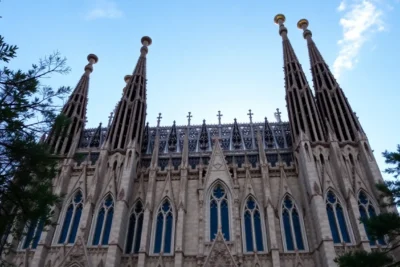
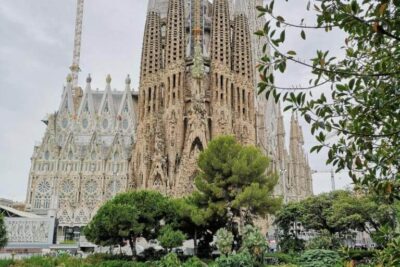
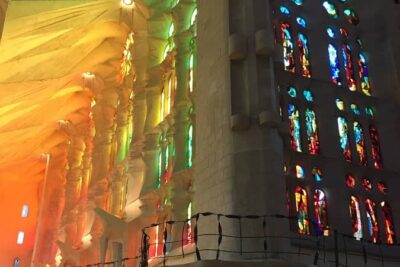
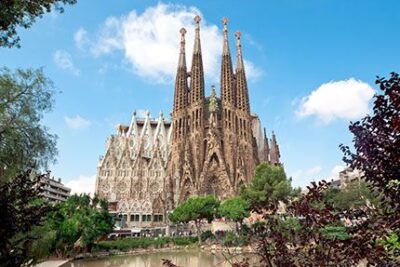
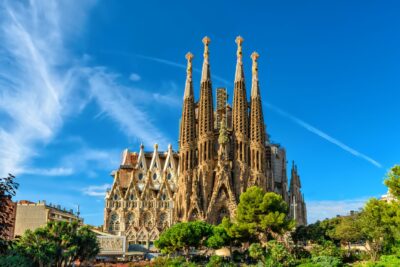
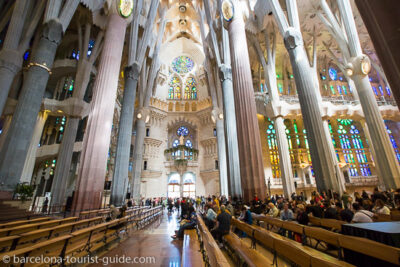
Read more!